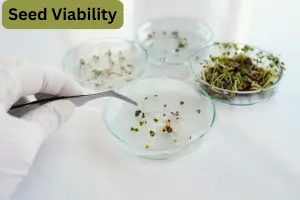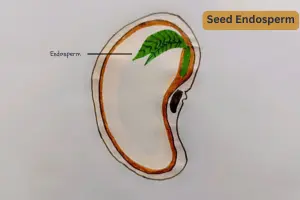What is Seed Embryo in Plants? A Beginner-Friendly Guide
Published: 21 Jan 2025
Welcome, Plant Lovers! 💖
Did you know that the secret to a plant’s life begins within a tiny seed? Inside every seed lies an embryo—the baby plant waiting to grow. A seed embryo is essential for germination and ensures the survival and growth of plants.
I am Sheila, the author of this guide. I have seven years of experience in botany and specialize in breaking down complex topics. In this article, I will explain what is seed embryo in plants, why it’s important, and how understanding it can help gardeners grow thriving plants.
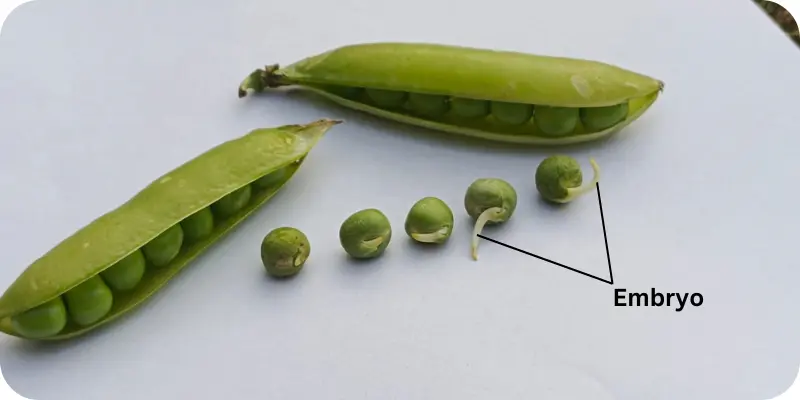
By the end, you’ll learn the basics of plant embryos, their structure, and tips for improving your gardening knowledge. Get ready to explore the science behind seeds and take your gardening skills to the next level!
What Is Seed Embryo in Plants?
A seed embryo is like the blueprint of a new plant, carefully packaged inside a seed. It can mature into a growing plant.
Learning this tiny but important part of a seed is the first step to becoming a confident gardener.
Let’s move into what makes up a seed embryo and how it forms.
A Simple Definition
Think of a seed embryo as a baby plant inside the seed. It has all the basic parts—like the root (radicle), shoot (plumule), and seed leaves (cotyledons)—in their earliest, undeveloped form. This little plant is in a dormant state, waiting for the right environment to start growing.
The creation of a plant embryo is one of nature’s most intricate masterpieces, a perfect harmony of simplicity and complexity.Dr. Jane Smith, Professor of Plant Biology, University of California
How a Seed Embryo Forms in Plants
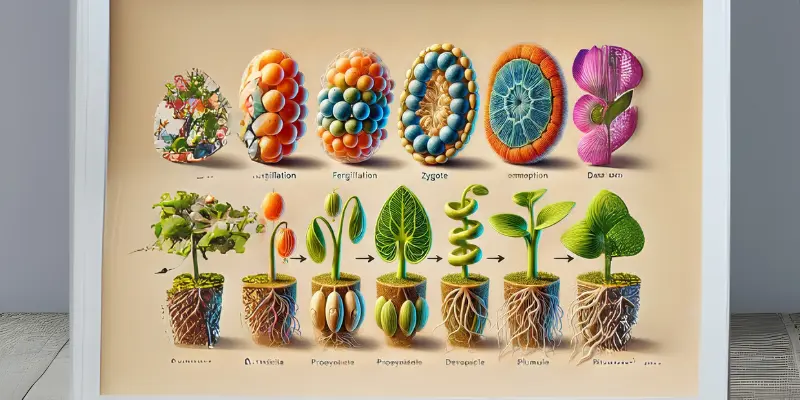
- The formation of an embryo begins when a seed is created during fertilization.
- In this process, the male and female parts of a flower combine to form a seed.
- Inside, the embryo starts to develop, along with food reserves that will nourish it when it germinates. It’s like a packed lunch for a long journey—everything the embryo needs to grow into a seedling is ready and waiting.
- From my gardening experience, I’ve often seen how healthy seeds with well-developed embryos lead to strong, vibrant plants. Choosing quality seeds is the foundation for successful gardening!
Why Is the Seed Embryo Important?
A seed embryo is like the spark that ignites a flame—it’s the starting point of a plant’s life. Just as a small spark can grow into a roaring fire, the plant embryo lays the foundation for the seed to develop into a thriving plant.
Understanding its role helps us value the intricate processes that make plant growth possible.
Essential for Plant Life
The embryo is the heart of the seed’s components. It carries all the vital components needed to grow into a healthy plant, including the root (radicle), shoot (plumule), and seed leaves (cotyledons).
Without this crucial structure, seeds would be lifeless and unable to transform into the plants we rely on for food, oxygen, and beauty in our gardens.
Role in Germination
When conditions like moisture, warmth, and oxygen are just right, the seed embryo awakens and begins its journey as a seedling. Think of it like a dormant artist coming to life, ready to create a masterpiece. This process of germination not only ensures the continuation of plant species but also supports ecosystems and food chains.
I’ve observed firsthand in my garden how understanding this process helps ensure successful sprouting, especially for vegetables like beans or delicate flowers like lilies.
Importance for Gardeners and Farmers
- Knowing about seed embryos can be a game changer for gardeners and farmers. It helps in selecting viable and healthy seeds, leading to better crop yields and gardening success.
- I’ve often recommended looking for seeds with intact embryos when teaching beginner gardeners. It’s like choosing the best ingredients for a recipe—starting strong sets you up for success.
- By recognizing the importance of embryos, we enhance our gardening efforts and contribute to a deeper understanding of the natural world.
Structure of a Seed Embryo
Every seed embryo is like a carefully packed suitcase for a long journey. It contains everything a young plant needs to start its life, and each item in the suitcase has a specific purpose, ensuring the plant’s successful growth.
Let’s unpack this suitcase and discover how its components work together to create life.
Parts of the Seed Embryo
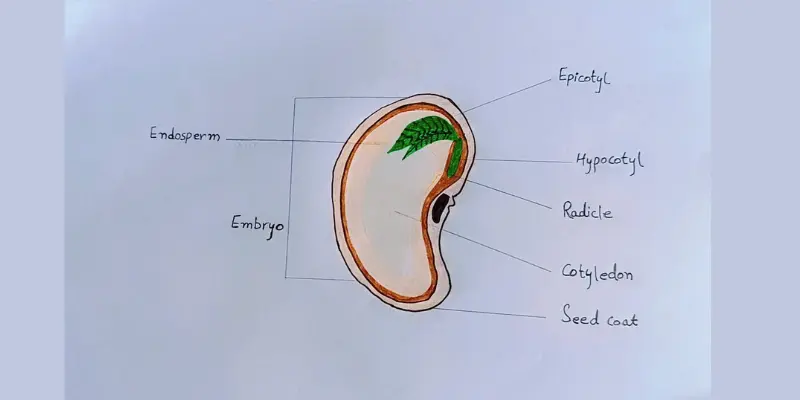
- Cotyledons (food storage): These are the seed’s “pantry,” packed with nutrients to fuel the young plant until it can make its food through photosynthesis. In some seeds, like beans, you can even see these seed leaves split open as the plant begins to grow.
- Radicle (future root): The radicle is the embryo’s root system, its first lifeline to the soil. It supports the plant and absorbs water and nutrients, similar to a straw.
- Plumule (future shoot): The plumule is the plant’s initial sign of upward growth, and it will eventually develop into the stem and leaves. It’s like the plant’s extending arm, stretching towards the sun.
- Embryonic axis: This is the central framework that connects all parts of the embryo, ensuring everything grows in harmony.
How These Parts Work Together
Each part of the seed embryo plays a critical role, just like team members working toward a common goal.
- For instance, in beans, the cotyledons provide the energy for the radicle to grow downward into the soil while the plumule shoots upward.
- Corn seeds, being monocots, have a single cotyledon but follow a similar growth strategy.
- From my own gardening experience, I’ve noticed how seeds with well-developed embryos, like heirloom beans, sprout faster and produce healthier plants.
By understanding these parts and their functions, gardeners can better select seeds and create conditions that help embryos thrive.
Types of Seed Embryos
Seed embryos are uniquely designed to support plant growth and development. They are divided into two types: monocots and dicots. Each type has specific characteristics and roles in germination and plant development.
For clarity, let us look at their differences as well as some remarkable adaptations in tabular form.
| Category | Monocot Embryo | Dicot Embryo |
| Number of Cotyledons | One Cotyledon (seed leaf) | Two cotyledons. |
| Examples | Straight and Slender, like blade of a glass | Beans, peas, sunflowers. |
| Plant Growth | The fibrous root system develops quickly. | Sprouts with two leaves forming a V-shape. |
| Food Storage | Straight and Slender, like the blade of a glass | Larger cotyledons store food for seedling growth. |
| Root Development | Straight and Slender, like the blade of a glass | Taproot system develops, providing stability. |
| Personal Gardening Tips | Monocots like corn grow faster initially, great for quick harvests. | Dicots like beans are sturdier and ideal for enriching soil with nitrogen. |
Fascinating Plant Embryo Adaptations 🌍🧪🌴
| Plant | Unique Adaptation | Why its fascination |
| Orchids | Tiny embryos depend on fungi for nutrients. 🍄 | A perfect example of symbiosis is when fungus and orchids help each other survive. |
| Coconuts | Embryo suspended in nutrient-rich liquid. 🥥 | Enables long-distance dispersal across oceans, ensuring survival in harsh conditions. |
| Mangroves | Viviparous embryos that germinate while still attached to the parent tree. | Allows the seedling to anchor in muddy, waterlogged environments immediately after falling. |
| Personal Insight | Understanding these adaptations can inspire gardeners to appreciate how plants overcome challenges and thrive in diverse conditions. | Recognizing these strategies can help gardeners mimic natural environments for better plant care and success. |
Why Should We Learn About Seed Embryos?
Seed embryos are the starting point of life for most plants. Understanding them is like discovering the blueprint of a skyscraper—it reveals how something so small can grow into something so grand.
Whether you’re a student, a gardener, or simply curious about nature, learning about seed embryos opens the door to understanding the intricate processes of life.
For Students: Learning How Life Begins
- Seed embryos offer students a fascinating glimpse into the start of life. They’re a cornerstone of biology, showing how seeds transform into thriving plants that sustain our ecosystems.
- When I first studied seed embryos during my master’s in botany, I was amazed by their simplicity and complexity working in harmony—it was like uncovering nature’s secret recipe for growth.
For Gardeners: Choosing and Caring for Seeds
Understanding the journey of a seed’s embryo is not just science; it’s a lesson in patience, resilience, and growthJohn Green, Renowned Horticulturist and Gardening Author
- For gardeners, understanding seed embryos is like knowing the quality of the ingredients before cooking a meal. By selecting seeds with viable embryos, you increase your chances of healthy germination and flourishing plants.
- In my gardening journey, knowing how to spot a strong seed has made all the difference in creating a lush and flourishing garden.
For Everyone: The Bigger Picture
- Seed embryos are not just about gardening or science; they’re key to food security and environmental health. They remind us of the interconnectedness of life—how something as small as a seed can have a ripple effect on ecosystems and global agriculture.
- By learning about plant embryos, we gain insights into preserving biodiversity and ensuring sustainable practices for future generations.
Understanding plant embryos isn’t just for experts—it’s for anyone who values life and growth.
| Interesting Facts |
|---|
|
Conclusion
So, guys, it’s time to wrap up. In this article, we’ve broken down the essentials of what a seed embryo is in plants and how it shapes the life of a plant.
My recommendation? Don’t underestimate the power of quality seeds and proper germination techniques—they truly set the foundation for a successful garden. Why not start small and try sprouting seeds from your kitchen, like beans or corn?
Let me know how it goes—together, we can make learning about plants a rewarding adventure!
Frequently Asked Questions❓
You can learn more about the embryo in below discussed frequently asked questions:
A seed embryo is the tiny, early form of a plant that exists inside a seed. It contains all the essential parts needed to grow, like the root, shoot, and leaves. The embryo remains dormant until the seed is ready to germinate.
The seed embryo gets its nutrients from the seed’s cotyledons, which act as a storage unit. These nutrient-packed cotyledons feed the embryo until it can start photosynthesizing. Think of it like a starter kit for growth.
During germination, the embryo starts to grow. The radicle (root) pushes downward to anchor the plant, while the plumule (shoot) rises upward toward the light. This process helps the embryo transform into a seedling.
The time it takes for an embryo to grow into a plant depends on the type of seed and the environmental conditions. Some seeds, like beans, can sprout in just a few days. Others, like trees, may take months or even years to mature fully.
Yes, an embryo can grow without light for a short period. Initially, the embryo uses the energy stored in the cotyledons to grow. Once it emerges from the soil, it will need light for photosynthesis to continue growing.
Understanding seed embryos helps gardeners select healthy seeds and create the best conditions for them to sprout. It also teaches you how plants grow from the inside out, making it easier to support them throughout their life cycle.
Monocot embryos have one cotyledon, while dicot embryos have two. This difference affects their growth, with monocots typically producing long, narrow leaves and dicots producing broader leaves. Gardeners should make this distinction when planting different types of seeds.

- Be Respectful
- Stay Relevant
- Stay Positive
- True Feedback
- Encourage Discussion
- Avoid Spamming
- No Fake News
- Don't Copy-Paste
- No Personal Attacks



- Be Respectful
- Stay Relevant
- Stay Positive
- True Feedback
- Encourage Discussion
- Avoid Spamming
- No Fake News
- Don't Copy-Paste
- No Personal Attacks
